Advertisement
Published: June 26th 2014
And how reading any of these books will instantly make you want to visit Istanbul
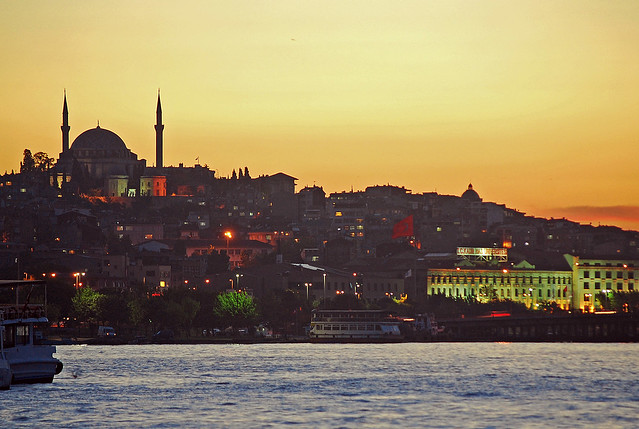
As with all great cities, hundreds of books have been dedicated to Istanbul. They have chronicled real or made-up stories, they have mused over life and its twists and turns, they have praised and lamented the fates of men, and all this was set within the walls of Istanbul. Called the 'City of desire', a place of major historical significance, and a cultural hub, Istanbul is equally the backdrop to stories of kings and beggars, lovers and fishermen, artists and philosophers (to mention a few).
So what are these stories and where did they take place? Well, they're innumerable, but just because the sea can't be crossed, one shouldn't shy away from having at least a dip. You may find Orhan Pamuk's books missing from this list, though they are notable examples of such stories, but in my opinion they deserve a whole article for themselves. So here are 5 other reads that are set in Istanbul, to inspire you to visit and experience this grand city yourself.
Agatha Christie's "Murder on the Orient Express" (1934)
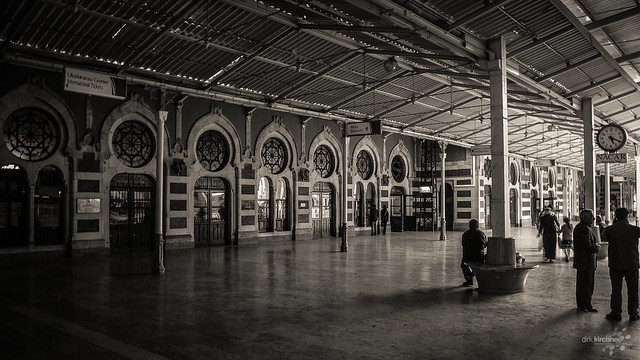
It doesn't get much more classic than this. Of course, there are many noteworthy Agatha Christie stories, but 'Murder on the Orient Express' is a must read for every serious fan. Furthermore, this story has inspired numerous pop-culture references, such as Agatha Christie's surprising appearance in a Doctor Who episode.
What's more, though, is that Christie herself traveled with the Orient Express and, the story goes, was inspired to write the book
during her stay at the Pera Palace Hotel in Istanbul. Located in Beyoğlu, the
Pera Palace Hotel was constructed in 1892 in order to accommodate passengers of the Orient Express. There, in room 411 of the 'oldest European hotel in Turkey', Agatha Christie is said to have been inspired or even have written 'Murder on the Orient Express'.
The hotel has hosted numerous other famous guests, too, most notably Mustafa Kemal Atatürk, the first president of Turkey, whose room can be visited even today. It features many of his personal items.
Dan Brown's "Inferno" (2013)
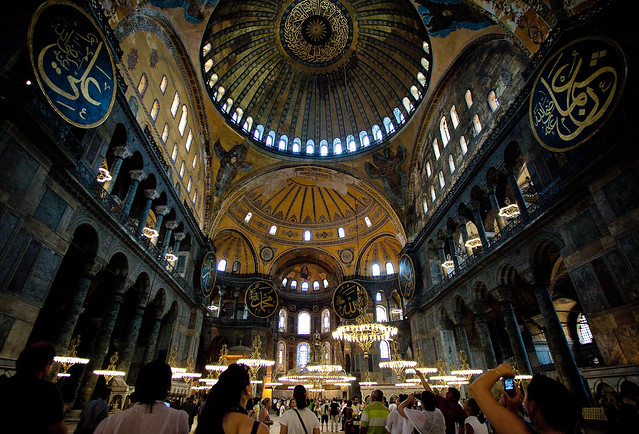
You're either going to love this or hate it. Dan Brown's latest book 'Inferno' features some of the most important landmarks of the city. Most notably the
Hagia Sophia and the
Basilica Cistern. And even without the mystery that Brown shrouds these landmarks in, they are quite enigmatic on their own account.
The Hagia Sophia, for example, is the only religious building in the world to have been an Eastern Orthodox cathedral, a Catholic cathedral, an Imperial mosque and now a museum. Its architecture, mosaics and decorations reflect its complex history, which is what makes it a perfect setting for Dan Brown's novel.
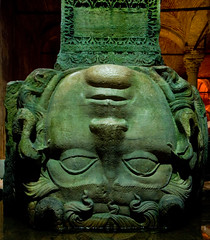
The Basilica Cistern, built during the time of emperor Justinian just like the current building of the Hagia Sophia, has quite a story to tell, itself. The largest of the ancient cisterns in Istanbul, it stored up to 100,000 tons of water and would filter the water for the nearby palace. An additional element of both majesty and mystery is added by the Medusa column bases located in the cistern - no one knows where they came from.
Hilary Sumner-Boyd and John Freely's "Strolling through Istanbul: A Guide to the City" (1972)
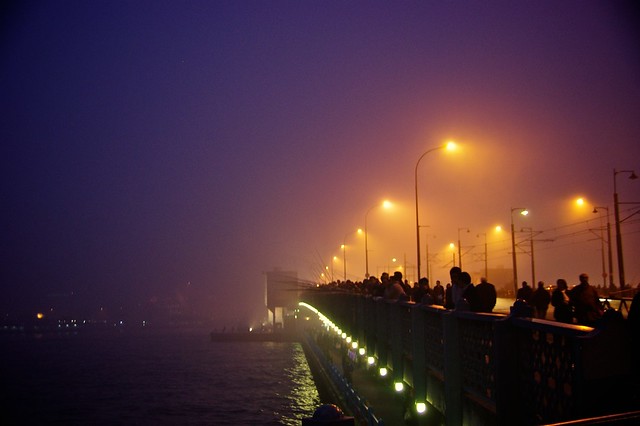
Often called one of the best guides to Istanbul, this book certainly deserves a place here. Since it's some 40 years old, it is by now in some ways out of date, while in others it remains truly contemporary and adequate. For example, while it lists many important and famous landmarks, the position it devotes to
Galata Bridge is an important one and deserves to be quoted:
"There are other places in Istanbul with more panoramic views, but none where one can better sense the intimacy which this city has with the sea, nor better understand how its maritime situation has influenced its character and its history. But you should do your sight-seeing there as do the Stamboullus, seated at a teahouse or café on the lower level of the Bridge, enjoying your keyif over a cup of tea or glass of raki, looking out along the Golden Horn to where it meets the Bosphorus and the Sea of Marmara."
Mesmerizing descriptions such are only part of what makes this book just as valid and beautifully relevant as it was 40 years ago. And whenever you find an inconsistency between Istanbul back then and Istanbul today, it is an interesting read, providing you with a rich historical look at what the city used to be like.
Yaşhar Kemal's "The Birds Have Also Gone" (1978)

Yaşhar Kemal, one of Turkey's most beloved authors and a candidate for the Nobel Prize in Literature, is the author of 'The Birds Have Also Gone'. Beautiful, dramatic and very moving,
the book explores how Istanbul was changing in 1970's and what impact such changes had on its inhabitants. The three boys who are the main protagonists set out to realize their dreams and ambitions by trying to set up a business. The boys catch birds, and then try to persuade people to buy them, in order to set them free.
A beautiful scene in the book set on
Taksim Square describes how the boys reason about their 'business' idea: "Taksim is the most populous part of the town. Wouldn't there be some, among the crowds that always throng the square, just a few with still a modicum of humanity who, for a trifling sum, will take pride and joy in setting little birds free. Such a sight it is when those birds soar joyously up into the sky "
Turkey is known for its respect for animals, and birds make no exception. Travelling through Turkey,
you will often see bird houses, especially on older buildings. They can also be spotted on buildings around Taksim Square.
Ahmet Hamdi Tanpınar's "A Mind at Peace" (1949)

Finally, we should not forget Ahmet Hamdi Tanpınar who is among the ranks of the most important modern Turkish novelists. Tanpınar exerted a strong influence on subsequent writers, as Nobel Laureate Orhan Pamuk has often pointed out. His novel 'A Mind at Peace' deals with changes in Turkish society after the fall of the Ottoman Empire and the institution of the Republic of Turkey.
Among the many places that he describes in his book is Çadircilar Street, or Çadırcılar Caddesi, located in the heart of Istanbul right next to the
Grand Bazaar. The 'Street of the Tentmakers' has undergone many transformations over the years. Nowadays it blends in with the surrounding bazaars and markets, but back in the day it was a bustling and lively place, featuring coppersmiths and junk collectors alongside cotton and wool merchants.
Be inspired and come visit!
Feel inspired? I strongly recommend reading the books in list along with others by authors such as Orhan Pamuk or Murat Gülsoy. If you've never been to Istanbul, when you reading these you will certainly find yourself inspired to pack your bags and head out. And head out you should!
This article was brought to you by
Zoe Yacht, an Istanbul-based and fully licensed Bosphorus cruise operator.
Advertisement
Tot: 0.248s; Tpl: 0.01s; cc: 5; qc: 43; dbt: 0.0526s; 1; m:domysql w:travelblog (10.17.0.13); sld: 1;
; mem: 1.1mb






